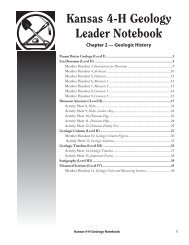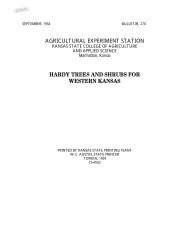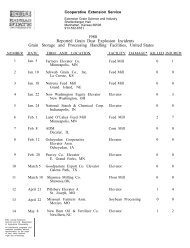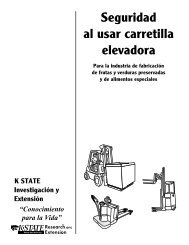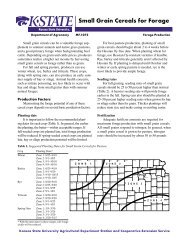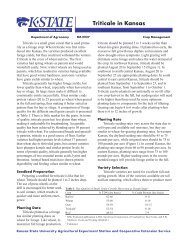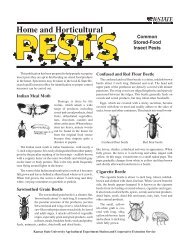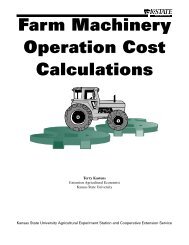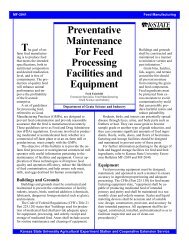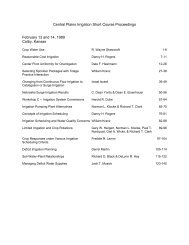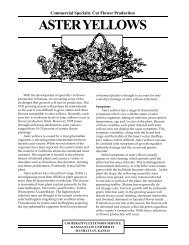S133 Kansas 4-H Horse Show Rule Book - K-State Research and ...
S133 Kansas 4-H Horse Show Rule Book - K-State Research and ...
S133 Kansas 4-H Horse Show Rule Book - K-State Research and ...
Create successful ePaper yourself
Turn your PDF publications into a flip-book with our unique Google optimized e-Paper software.
• Saddle pad.<br />
Optional<br />
• Whips.<br />
Prohibited<br />
• Dropped noseb<strong>and</strong>.<br />
• Breastplate.<br />
• Kimberwick.<br />
• Martingale <strong>and</strong> training forks.<br />
Saddle Seat Pleasure<br />
The walk is a true four-beat gait <strong>and</strong> should be<br />
straight, true, <strong>and</strong> flat-footed.<br />
The trot is a two-beat diagonal gait. <strong>Horse</strong>s<br />
should move with balance <strong>and</strong> fluidity. High action<br />
will be penalized.<br />
The extended trot is a two-beat diagonal gait with<br />
lengthened stride <strong>and</strong> appropriate increase in speed.<br />
The canter is a smooth <strong>and</strong> controlled three-beat gait.<br />
The h<strong>and</strong> gallop is a four-beat gait with a lengthened<br />
stride. It should be a faster gait, but extreme<br />
speed will be penalized.<br />
The judge may ask any or all horses to back.<br />
Saddle Seat Equitation<br />
Equitation classes recognize the rider’s ability to<br />
ride a horse correctly <strong>and</strong> to use various aids required<br />
for a horse to perform basic maneuvers. Riders will be<br />
judged on basic position in saddle; position <strong>and</strong> use<br />
of h<strong>and</strong>s, legs, <strong>and</strong> feet; ability to control <strong>and</strong> show<br />
the horse; <strong>and</strong> suitability of horse to rider. The rider’s<br />
ability to execute maneuvers correctly shall be considered<br />
more important than the horse’s performance.<br />
• The rider should sit in a comfortable, balanced,<br />
<strong>and</strong> relaxed manner while maintaining an erect<br />
upper body with eyes up <strong>and</strong> looking forward.<br />
• The rider’s legs should have a slight bend <strong>and</strong><br />
hang beneath the rider such that when viewed<br />
from a profile, a straight line (approximately)<br />
can be drawn through the rider’s ear, shoulder,<br />
hip, <strong>and</strong> heel.<br />
49



